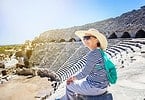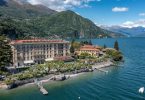The Italy City Tourist Tax for the year 2019 is foreseen to reach a new record of 600 million euro. This result is estimated by a study made by Federalberghi (the Italian Hotel Federation) presented at the 69th general assembly of the association in Capri attended also by participation from the Minister of Mipaaft, Gian Marco Centinaio.
There has been a very rigorous monitoring that also certifies the extensive application of the tax – in force in as many as 1,020 Italian municipalities – evidently all for tourism purposes. The tourist tax or disembarkation tax (which in this case involves 23 Italian municipalities) is paid by 75% of tourists.
The city with the greatest revenue from the tourist tax – according to the calculations published by Federalberghi – was Rome, with receipts of 130 million euros, 27.7% of the total. The proceeds from the top four (Rome, Milan, Venice, and Florence) are over 240 million, over 58% of the national total.
Here are the top ten of the tax revenue:
1. Rome (130 million euros – 27.7%)
2. Milan (45.427.786 – 9.7%)
3. Florence (33.140.290 – 7.0%)
4. Venice (31.743.790 – 6.8%)
5. Rimini (7,640,908 – 1.6%)
6. Naples (7,553,695 – 1.6%)
7. Turin (6,738,424 – 1.4%)
8. Bologna (6.046.700 – 1.3%)
9. Riccione (3,388,348 – 0.7%)
10. Verona (3,213,122 – 0.7%)
“Almost 10 years after the reintroduction of the tribute,” commented Federalberghi President Bernabò Bocca, “we unfortunately have to note that they were easy prophets. The tax is almost always introduced without arranging the destination of the revenue and without accounting for its actual use.
“Someone tells the story of the purpose tax, intended to finance actions in favor of tourism. In reality it is a tax on tourism, whose sole purpose seems to be to plug the holes in municipal budgets.
“In recent times, the picture has worsened due to a paradoxical sanctioning system, which we asked to change, which treats those who misappropriate resources and those who err for a few euros in the same way who pays with a few days’ delay and who has never paid what was collected.”
For the president of the national federation that represents over 32,000 hotels, the far west that is registered in the sector of short leases is not tolerable. The law established that the portals must collect the tourist tax due from tourists who book and pay through the platforms, but Airbnb only fulfills this obligation in 18 out of 997 municipalities.
“Moreover, these administrations, enticed by the prospect of new income, they have become available to sign a halftime agreement, accepting a substantially flat-rate reporting system, which does not allow an analytical control and leads to wonder if the extremes of a loss of revenue are not configured,” said President Bocca.
In detail, the 1,020 municipalities that apply it constitute “just” 13% of the 7,915 Italian municipalities, but host 75% of the overnight stays registered in Italy each year. Of these municipalities, 26% are located in the Northwest, 41.2% in the Northeast, 15.5% in the Center, and 17.3% in the South with 31.6% of the municipalities that apply the tourist tax (315 out of 997) are from mountains.
This is followed by the marine localities, with 19.7% (196), the hilly ones with 16.1% (161). There are only 104 art cities, but they include the so-called capitals of Italian tourism, which move large numbers. The lake destinations are 96 and the thermal destinations 40.
In 2017 (the last year for which official data is available), the Italian municipalities have collected about 470 million euros as a tourist tax and landing tax. The figure is gradually increasing: the established national revenue was around 162 million euros in 2012 and 403 million in 2015.























